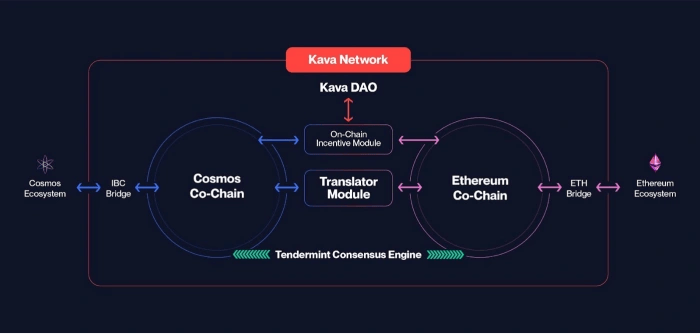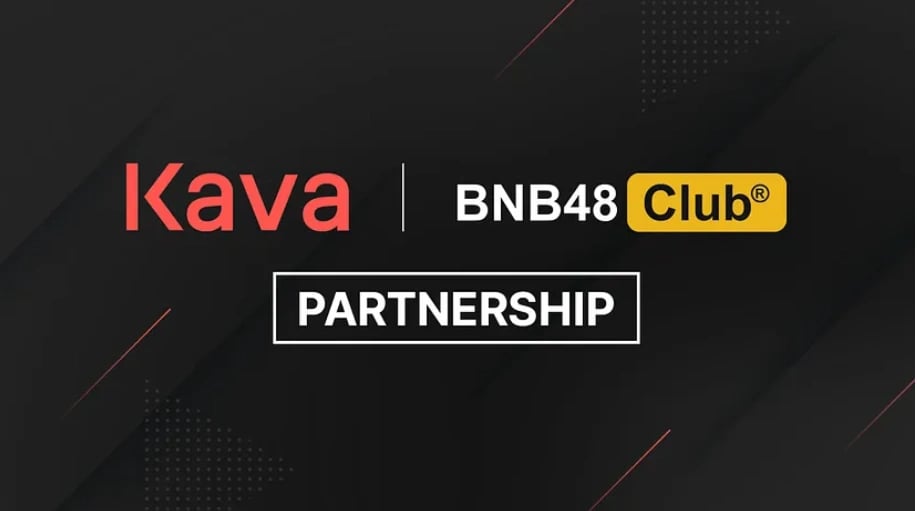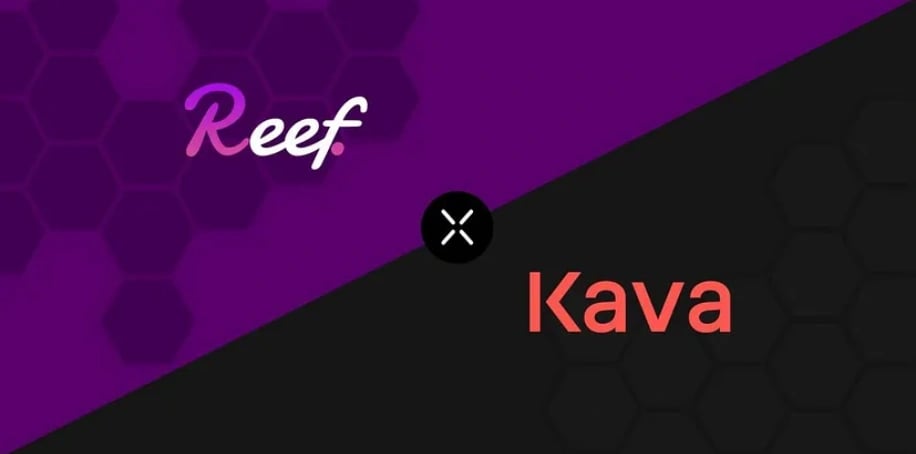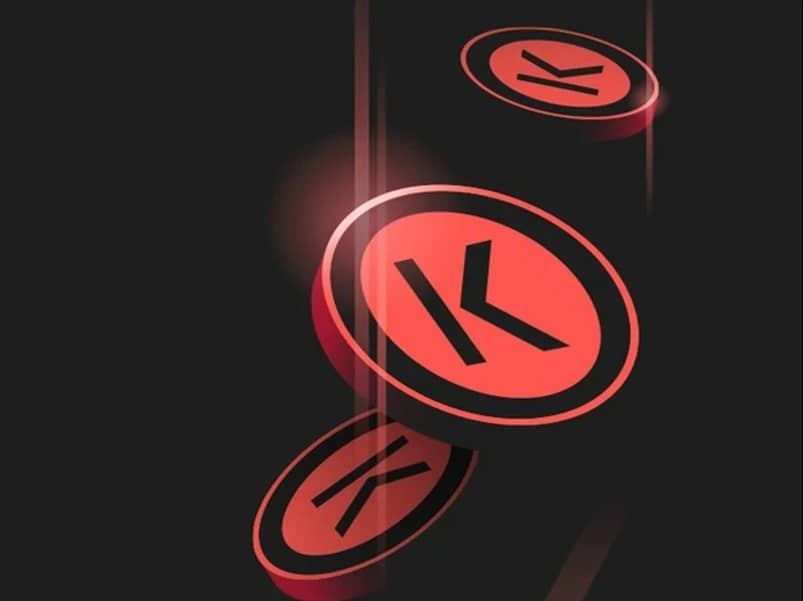위키 구독하기
Share wiki
Bookmark
Kava
Kava
**카바(Kava)**는 여러 블록체인을 연결하는 DeFi 플랫폼으로, 주요 암호화폐 사용자에게 담보 대출과 스테이블코인을 제공합니다. 카바는 Tendermint Core 프레임워크를 기반으로 하며, 기능 향상 및 추가 기능 제공을 목표로 합니다.[1][2][20]
개요
카바는 Interledger를 사용하여 다양한 블록체인 네트워크를 통합하여 새로운 사용자가 다양한 네트워크에 접근할 수 있도록 합니다. 카바를 통해 지갑 사용자는 크로스체인 결제를 보내고 지갑 내에서 원활한 자산 스왑을 완료할 수 있습니다. 카바는 서비스 제공을 위해 USDX 스테이블코인과 투표 및 거버넌스에 사용되는 KAVA 스테이킹 토큰을 활용합니다.[5][20]
또한 거래소는 카바 솔루션을 사용하여 사용자가 블록체인 자원에 대한 제어권을 유지하면서 거래소의 주문장과 직접 거래할 수 있습니다. 카바의 암호화폐 스왑 애플리케이션인 Switch는 서로 다른 블록체인 기반의 암호화폐라도 거의 즉시 스왑할 수 있도록 합니다.[20]
카바는 또한 코스모스(Cosmos)를 활용하며 Tendermint 기반의 지분 증명(PoS) 합의 메커니즘으로 작동합니다. 카바는 기본적으로 MakerDAO와 유사한 CDP 시스템을 기반으로 하지만 코스모스의 존(zone)을 활용하여 독립적인 네트워크(예: XRP, 비트코인)에서 실행되는 암호화폐를 추가합니다. 또한 이더리움 생태계를 활용하여 이더리움과 코스모스 모두를 위한 코체인을 제공하고 EVM 호환성과 오픈소스 프레임워크인 Cosmos SDK를 사용합니다.[8][9][25]

역사
테스트넷 출시
2020년 4월, 카바의 테스트넷-5000이 출시되었습니다. 테스트넷-5000은 원자 스왑을 통해 바이낸스 체인과 카바 간 자산을 안전하게 전송하는 프로토콜인 BEP3을 지원했습니다.[10]
BNB 투자자 클럽 협업
2020년 8월, 카바는 BNB 투자자 클럽인 BNB48과 협력했습니다. BNB48 클럽은 카바의 중국 검증자, 스테이킹 사용자 및 대출 플랫폼 사용자에게 전문적인 제품 검토 및 기술 컨설팅 서비스를 제공하여 카바 커뮤니티의 기술 컨설턴트 역할을 수행했습니다.[21]

인젝티브 랩스 파트너십
2020년 8월 13일, 카바 팀은 최초의 2계층 파생상품 DEX 플랫폼인 인젝티브 프로토콜(Injective Protocol)의 제작자인 인젝티브 랩스와의 전략적 협력을 발표했습니다. 이 협력을 통해 인젝티브 DEX 사용자에게 카바의 대출 기능과 스테이블코인이 제공되었습니다. 또한 이 통합을 통해 카바와 인젝티브 프로토콜은 체인링크(Chainlink) 오라클 데이터, 서비스 및 기타 온체인 및 오프체인 리소스를 교환할 수 있게 되었습니다.[11]
DeFi 스테이킹 프로그램
2020년 8월, 바이낸스(Binance)는 MakerDAO의 대출로 생성된 스테이블코인인 다이(Dai)와 카바를 포함한 DeFi 스테이킹 프로그램을 시작했습니다. 이를 통해 카바 사용자는 더 이상 카바 앱을 사용할 필요 없이 바이낸스의 DeFi 스테이킹 포털을 통해 직접 이용할 수 있게 되었습니다.[12]
카바 웹 앱은 Ledger Nano X 및 S 장치를 사용하여 USDX를 안전하게 대출하는 것을 지원했습니다. 또한 트러스트 월렛(Trust Wallet)도 지원했습니다.[13]
리프 파이낸스 파트너십
2020년 11월, 카바는 폴카닷(Polkadot) 생태계의 주요 DeFi(탈중앙화 금융) 프로젝트인 리프 파이낸스와 파트너십을 맺었습니다. 이 협력을 통해 카바의 담보 대출, USDX 스테이블코인, 하드 프로토콜 및 기타 수익 기회가 리프 사용자에게 제공되었습니다. 카바는 코스모스 SDK로 구축된 최초의 프로젝트로 리프 플랫폼과 통합되었습니다.[14]

7억 5천만 달러 개발자 인센티브 프로그램
2022년 3월 3일, KavaDAO는 7억 5천만 달러 규모의 개발자 인센티브 프로그램을 시작하여 모든 블록 보상의 62.5%를 Kava 이더리움 및 코스모스 코체인에서 개발하는 개발자에게 배포했습니다.[23]
카바 12
2023년 1월 12일에 출시된 카바 12는 DAO 기술을 도입하여 코스모스(Cosmos) 체인 DAO가 배출량을 더욱 효율적이고 유연하게 관리할 수 있도록 했습니다. 그 이후 배출량은 카바 커뮤니티 풀로 명확하게 흘러들어가 성장 이니셔티브에 대한 자금 배분 및 포트폴리오 관리에 대한 더 큰 제어 및 가시성을 제공합니다. 이 업그레이드를 통해 카바 DAO 커뮤니티 풀은 자산 포트폴리오를 보유할 수 있게 되어 시장 상황에 따라 재조정할 수 있게 되었습니다. 새로운 아키텍처는 사용 매개변수를 기반으로 자산을 소각하고 Kava DAO 거버넌스를 통해 총 공급량을 제한할 수 있도록 했습니다. KAVA의 스테이킹 APY는 고정 매개변수가 되어 커뮤니티에 대한 더욱 예측 가능한 스테이킹 보상을 보장합니다. [28]
잘못된 내용이 있나요?
